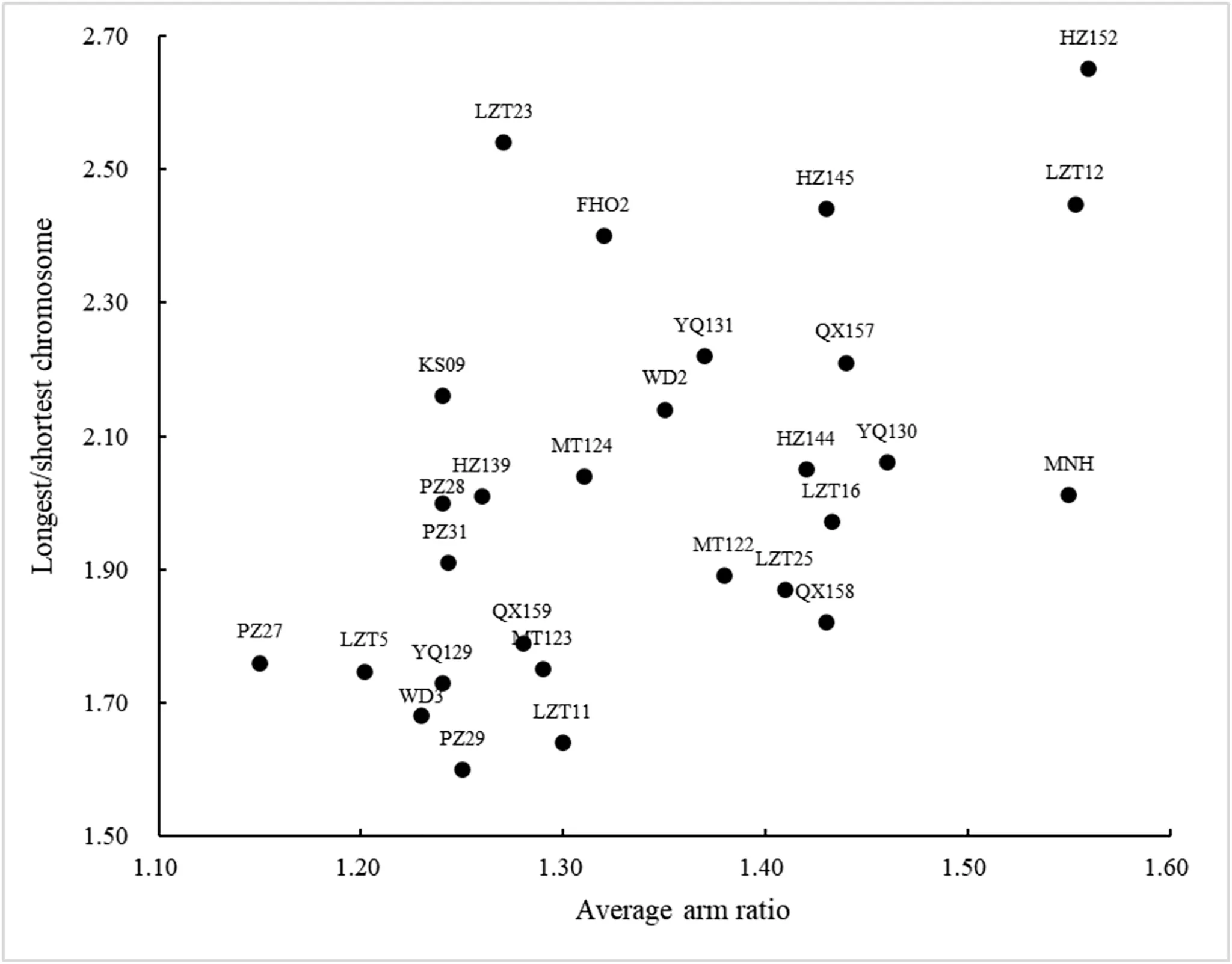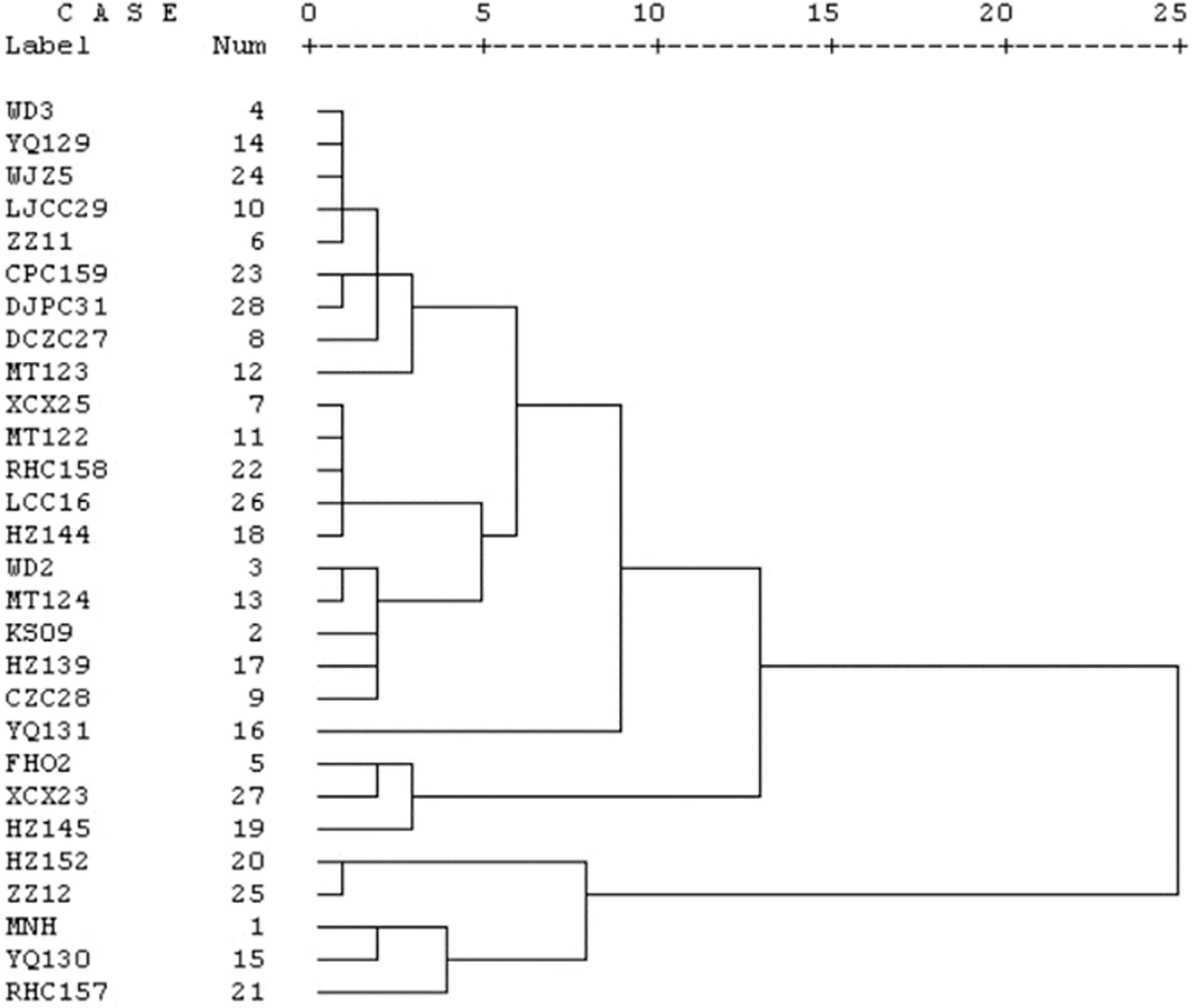Karyotypic diversity of the Chinese cherry
The Chinese cherry (Prunus pseudocerasus Lindl.), a fruit and ornamental species of significant value for both biodiversity and Chinese agriculture, was the focus of an in-depth study aimed at determining ploidy levels and karyotypic characteristics in 28 local accessions from Guizhou Province, China.
The study, conducted through mitotic analysis of stem tips and confirmed by flow cytometry, identified a basic chromosome number of x = 8. The results revealed a strong predominance of tetraploid individuals (19 out of 28), alongside nine hexaploids, with no pentaploids found. This distribution highlights a broad genomic variability, valuable for both understanding the species' evolutionary dynamics and for practical applications in breeding.
 Figure 1. Scatter plot of karyotypic asymmetry. Source: Nian Chen et al., 2024.
Figure 1. Scatter plot of karyotypic asymmetry. Source: Nian Chen et al., 2024.
The karyotype analysis classified chromosomes based on their morphological characteristics: all karyotypes were composed of metacentric (m) and sub-metacentric (sm) chromosomes, with variation observed in the mean arm ratio (MAR from 1.15 to 1.56), the longest/shortest chromosome ratio (Lc/Sc from 1.6 to 2.65), and the karyotypic asymmetry index (As.K from 53.74% to 61.6%).
Chromosomal classification and variation
These values enabled the identification of three main karyotype types: “1A,”
“1B,” and “2B,” with 13 accessions in the “1A” group, 10 in “1B,” and five in “2B.”
Notably, accession HZ152 was identified as having the most advanced evolutionarily combination karyotype (“2B”), characterized by higher asymmetry and a large number of sub- metacentric chromosomes, while accession DCZC27 exhibited the most primitive form among those analyzed.
 Figure 2: Karyotypic clustering dendrogram. Label represented 28 cherry accessions used in this study, Num represented genetic distance. Source: Nian Chen et al., 2024.
Figure 2: Karyotypic clustering dendrogram. Label represented 28 cherry accessions used in this study, Num represented genetic distance. Source: Nian Chen et al., 2024.
The integration of karyotyping with flow cytometry proved especially effective for validating ploidy levels: ten accessions showed G1 peaks equivalent to the tetraploid control, while four had significantly higher values (approximately 1.5 times), suggesting they were likely hexaploid.
Genetic variability and breeding potential
The study highlighted the lack of a direct correlation between geographic origin of accessions and their karyotypic composition, suggesting that genetic variability is influenced not only by geography but also by ecological, climatic, and historical factors.
From an evolutionary perspective, accessions in group “2B,” though fewer in number, play a
key role in understanding genomic differentiation processes and represent a potential genetic
reservoir for the development of new cherry varieties.
The chromosomal identification of Chinese cherry accessions provides new insights into the
karyotypic diversity within Prunus pseudocerasus Lindl., revealing complex relationships
between diploid and polyploid species.
Implications for conservation and breeding
These findings offer a cytogenetic foundation for future breeding and germplasm conservation programs, contributing to the enhancement of genetic resources for Prunus pseudocerasus Lindl. in China.
By incorporating this knowledge into breeding programs, breeders may exploit the genetic traits associated with different karyotypes, supporting the development of new cherry cultivars better suited to climate change and market demands.
Source: Chen, N., Wang, Y., He, M., An, F., Wang, J., & Song, C. (2024). Identification of chromosome ploidy and karyotype analysis of cherries (Prunus pseudocerasus Lindl.) in Guizhou. PeerJ, 12, e18668. https://doi.org/10.7717/peerj.18668
Source open image: Yan Ma et al., 2024
Andrea Giovannini
University of Bologna (ITA)
Cherry Times - All rights reserved












